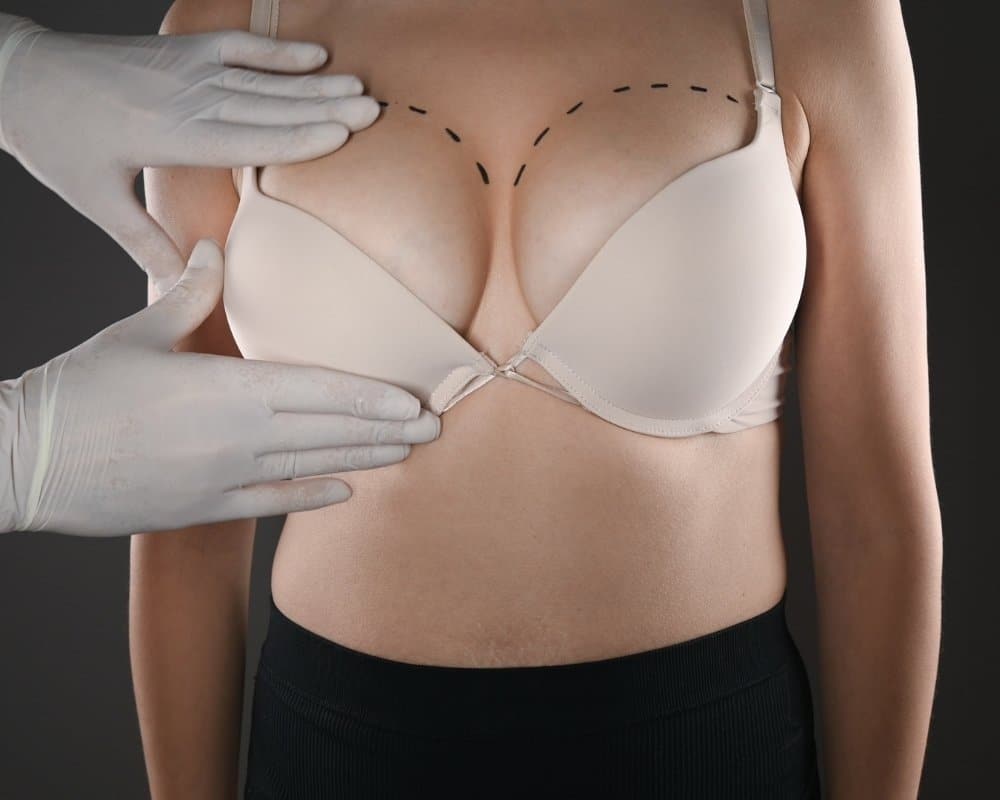Did you know that breast augmentation surgery is one of the most popular cosmetic procedures worldwide, with over 300,000 surgeries performed each year in Australia alone? This surgery can boost your confidence and help you look the way you want. It’s important to know how it works and what results to expect, whether you’re new to it or just want more details.
Key Takeaways
- Understand the different aspects of breast augmentation surgery, including choosing implants, surgical techniques, and post-surgery care.
- Select implants carefully by considering size, shape, and material to achieve desired aesthetic results.
- Prepare for surgery by following pre-operative instructions provided by your surgeon and discussing your goals and concerns openly.
- Be aware of the various surgical techniques available, such as incision placement and implant positioning, to make informed decisions.
- Prioritize post-surgery care by adhering to follow-up appointments, monitoring for any complications, and following recovery guidelines.
- Acknowledge the potential risks associated with breast augmentation surgery and discuss them thoroughly with your surgeon.
Defining Breast Augmentation
Overview
Breast augmentation surgery aims to enhance breast size and shape, boosting self-esteem. Common reasons for choosing this procedure include correcting asymmetry, increasing volume, and improving overall appearance. While the surgery offers benefits, individuals must be aware of potential risks like infection and scarring.
Benefits
Breast augmentation can significantly boost self-confidence by providing a more proportionate figure. The procedure addresses concerns related to breast size, helping individuals achieve their desired look. Moreover, it plays a crucial role in restoring breast appearance after significant weight loss or pregnancy.
Limitations
Understanding the risks associated with breast augmentation is crucial before proceeding with the surgery. Complications such as implant rupture or capsular contracture should be considered. Realistic expectations are vital to avoid disappointment post-surgery. It’s essential to acknowledge that while the procedure offers aesthetic improvements, it also carries inherent risks that need careful consideration.
Choosing Implants
Saline vs Silicone
Saline implants offer a firmer feel and are filled with sterile saltwater, providing a uniform shape. On the other hand, silicone implants provide a more natural look and feel due to their gel-like consistency. When deciding between the two, consider that saline implants may ripple less but require a slightly larger incision compared to silicone.
Factors such as desired firmness, incision size, and potential risks like implant rupture should be weighed when choosing between saline and silicone implants. Silicone implants tend to be pricier than saline ones, which can impact decision-making based on budget constraints.
Implant Textures
Implant textures play a crucial role in breast augmentation by affecting how the implant adheres to surrounding tissue. Smooth implants have a lower risk of complications like capsular contracture compared to textured implants. Patients should discuss these options with their plastic surgeon to understand the implications for their specific case.
It’s essential to note that while textured implants may reduce the risk of implant rotation, they have been associated with rare but serious conditions like Breast Implant-Associated Anaplastic Large Cell Lymphoma (BIA-ALCL). Patients must consider these risks carefully before making a decision.
Size and Shape
When considering size and shape for breast implants, factors such as body proportions, lifestyle, and personal preferences come into play. Achieving a natural appearance involves selecting an implant size and shape that complements your physique harmoniously. Consulting with a plastic surgeon can help determine the ideal dimensions for your desired outcome.
Preparing for Surgery
Initial Consultation
An initial consultation with a plastic surgeon is crucial before undergoing breast augmentation surgery. During this meeting, the surgeon will assess your medical history, discuss your goals, and evaluate your chest wall structure. Expect a detailed examination and a discussion on the different types of implants available.
Communication during the consultation is key; share your preferences openly to ensure the best possible outcome. The surgeon will also explain the risks involved and help manage expectations regarding results and recovery.
Pre-Surgery Guidelines
Before breast augmentation surgery, it’s essential to follow certain guidelines. Lifestyle adjustments may be necessary, such as quitting smoking or avoiding certain medications. Your cosmetic surgeon will provide specific instructions tailored to your needs.
Adhering to pre-surgery guidelines is crucial for a successful procedure and smooth recovery. Factors like maintaining a healthy diet and staying hydrated play a significant role in preparing your body for surgery. Ensure you understand and follow all instructions provided by your surgeon diligently.

Surgical Techniques
Incision Sites
The incision sites commonly used in breast augmentation include periareolar, inframammary, and transaxillary. Periareolar incisions are made around the areola, inframammary under the breast crease, and transaxillary in the armpit. Each has its pros and cons, impacting scarring visibility and recovery time. For instance, periareolar incisions may lead to more noticeable scarring but offer direct access for implant placement.
Implant placement is a crucial decision in breast augmentation surgery. Submuscular placement involves positioning implants beneath the chest muscle, providing a more natural look and reducing the risk of capsular contracture. On the other hand, sub glandular placement positions implants above the chest muscle, resulting in a quicker recovery but potentially increasing the risk of visible rippling.
Submuscular
Submuscular implant placement offers benefits such as better support for the implants, reduced risk of capsular contracture, and improved mammogram visibility. Individuals opting for this placement should consider longer recovery time and potential muscle distortion post-surgery.
Subglandular
In contrast, subglandular implant placement allows for a shorter recovery period and less discomfort compared to submuscular placement. However, it may lead to more visible rippling and a higher risk of capsular contracture. Factors influencing this choice include body type, desired outcome, and lifestyle preferences.
During the Procedure
Anesthesia Choices
When planning a breast augmentation surgery, patients will need to decide on the type of anesthesia. Two options are typically offered: local and general anesthesia. Local anesthesia involves numbing only the specific area being operated on, while general anesthesia puts the patient completely asleep. It’s crucial to discuss these choices with the surgeon beforehand.
- Pros and Cons:
- Local anesthesia: shorter recovery time, less risk of complications.
- General anesthesia: complete unconsciousness, suitable for longer procedures.
Step-by-Step Process
The surgical process of breast augmentation involves several key steps. First, an incision is made in a discreet location to minimize scarring. Next, the implant is inserted either under the chest muscle or directly behind the breast tissue. Finally, the incisions are closed with sutures for healing.
- Incision: Surgeons carefully make an incision based on the chosen technique.
- Implant Placement: The implant is positioned either submuscularly or subglandularly.
- Closure: Sutures are used to close the incisions and promote proper healing.
Understanding these steps can help patients feel more prepared and informed about what to expect during their breast augmentation surgery journey.
Post-Surgery Care
Recovery Process
After breast augmentation surgery, recovery is crucial for optimal results. Expect soreness and swelling initially. Follow post-operative care instructions diligently to aid in the healing process.
Managing Expectations Realistic expectations are key post-surgery. Addressing common misconceptions about breast augmentation helps set realistic goals. Open communication with the surgeon plays a vital role in managing expectations effectively.
Understanding Risks
Surgery Complications
Complications during breast augmentation surgery can include infection, bleeding, or adverse reactions to anesthesia. Identifying these issues promptly is crucial. Managing complications involves immediate medical intervention and following post-surgery care instructions diligently.
Seeking prompt medical attention if any unusual symptoms arise post-surgery is vital. Complications like excessive swelling, severe pain, or abnormal discharge should not be ignored. Early detection and treatment can prevent further complications and ensure a successful recovery.
Implant-Related Issues
BIA-ALCL Link
The potential link between breast implants and BIA-ALCL, a rare type of lymphoma, requires attention. Recognizing symptoms such as persistent swelling or pain around the implant area is essential. Risk factors like textured implants may increase the likelihood of developing BIA-ALCL.
Ongoing research aims to deepen our understanding of the relationship between breast implants and BIA-ALCL. Regular monitoring and awareness of symptoms post-augmentation are critical for early detection and treatment. Patients with concerns about BIA-ALCL should consult their healthcare provider promptly.
Breast Implant Illness
Breast implant illness refers to a range of symptoms some individuals experience after breast augmentation. Symptoms like fatigue, joint pain, or cognitive issues may indicate this condition. Removal of implants can alleviate these symptoms in some cases, emphasizing the importance of consulting a healthcare professional for evaluation and guidance.
Achieving Aesthetic Goals
Expected Outcomes
Breast augmentation surgery typically results in enhanced breast size and shape, boosting confidence. Factors like implant type, incision placement, and surgical technique can influence final aesthetic results. Realistic expectations are crucial post-surgery to ensure satisfaction with the outcomes.
Follow-Up Care
Follow-up care post-breast augmentation is vital for monitoring healing and detecting any issues early on. Regular check-ups allow for adjustments if needed, ensuring long-term satisfaction. This care plays a significant role in maintaining well-being and addressing any concerns that may arise.
Final Remarks
After navigating the complexities of breast augmentation surgery, you are now equipped with a comprehensive understanding of the process. Choosing the right implants, preparing for surgery, and considering surgical techniques all play pivotal roles in achieving your aesthetic goals. Remember to prioritize post-surgery care and understand the associated risks to ensure the utmost success of your procedure.
In conclusion, your journey towards breast augmentation is a personalized experience tailored to enhance your confidence and self-image. As you continue on this path, always consult with reputable professionals, follow post-operative instructions diligently, and prioritize your well-being. Your decision to undergo this procedure should be guided by informed choices and a commitment to achieving the best possible outcome. Stay informed, stay proactive, and embrace the transformative journey ahead.
Frequently Asked Questions
Is breast augmentation surgery a safe procedure?
Yes, breast augmentation surgery is generally safe when performed by a qualified and experienced plastic surgeon in an accredited facility. Complications are rare but can occur, so it’s essential to discuss all potential risks with your surgeon beforehand.
How do I choose the right type of implants for my breast augmentation?
Choosing the right implants involves considering factors like size, shape, material (silicone or saline), and placement (above or below the muscle). Your surgeon will help you select implants that best suit your body type and aesthetic goals.
What should I expect during the recovery period after breast augmentation surgery?
After surgery, you may experience swelling, discomfort, and restricted activities for a few weeks. Following your surgeon’s post-operative care instructions, including wearing compression garments and attending follow-up appointments, is crucial for a smooth recovery and optimal results.
What are the risks associated with breast augmentation surgery?
While complications are uncommon, risks include infection, bleeding, implant rupture, changes in nipple sensation, capsular contracture (scar tissue around the implant), and dissatisfaction with aesthetic outcomes. Discussing these risks with your surgeon beforehand is important for informed decision-making.
How long does it take to see the final results of breast augmentation surgery?
While initial results are visible shortly after surgery once swelling subsides, it can take several months for swelling to fully resolve and implants to settle into their final position. Patience is key as you wait to see the full outcome of your breast augmentation procedure.






